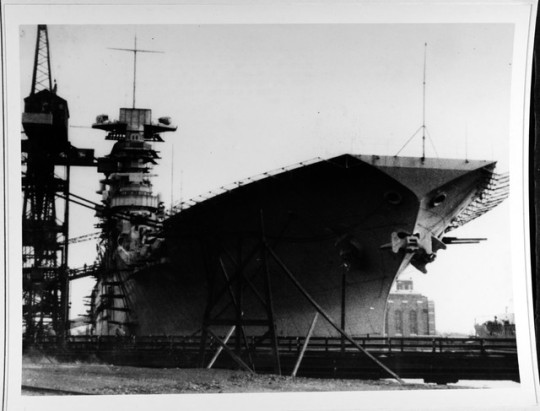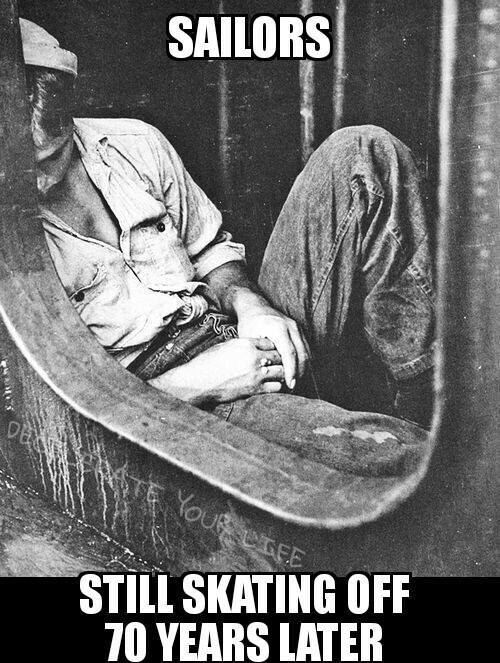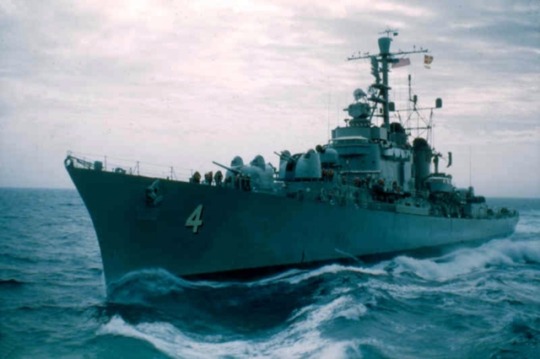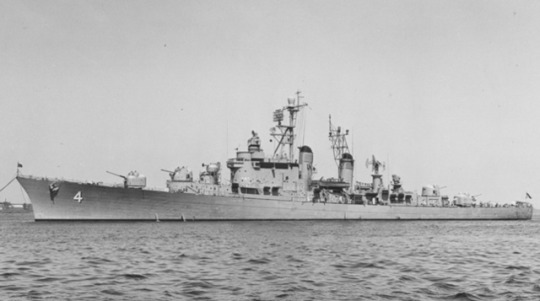Photo

“USS Lexington (CV-2) under construction at the Fore River Shipyard, Quincy, Massachusetts, 30 November 1927.“
(NHHC: NH 69130)
246 notes
·
View notes
Text
Unpopular opinion time!
I think doing away with conventional ratings is an opportunity to place sailors in communities with various jobs open to them rather than placing them in a specific job that may not be what they want. I think this may lead to better career flexibility and overall sailor satisfaction.
I’ll have to see more of what Big Navy decides on, but I think this may be a chance to fix our incredibly outdated advancement system.
What are your thoughts?
10 notes
·
View notes
Photo

‘Cept we’ve evolved to fan rooms and empty offices.
58 notes
·
View notes
Photo

USS WILLIS A. LEE (DD-929 / DL-4)
Flag Hoist/Radio Call Sign - NCAA
Tactical Voice Radio Call Sign (circa 1968) - BLACK CATTLE
CLASS - MITSCHER As Built.
Displacement 4855 Tons (Full), Dimensions, 490' (oa) x 47' 6" x 14' 8" (Max)
Armament 2 x 5"/54 RF (2x1), 4 x 3"/70 (2x2), 8 20mm (4x2) 2 Weapon Alfa ASW
Systems, 4 x 21" TT, 1 DC Track.
Machinery, 80,000 SHP; Geared Turbines, 2 screws
Speed, 36.5 Knots, Range 4500 NM@ 20 Knots, Crew 360.
Operational and Building Data
Laid down by Bethlehem Steel Quincy November 1 1949.
Launched January 26 1952.
Commissioned October 5 1954.
Decommissioned December 19 1969.
Stricken May 15 1972.
Fate Sold 5/18/73 to Union Minerals and Alloys, New York, NY and scrapped.
4 notes
·
View notes
Photo

Originally classed as (DD-929), the Willis A. Lee was reclassed as (DL-4) during construction in the belief that she and her sisters would be "destroyer leaders". Her original armament was deceptive with ASW Weapon As mounted fore and aft and the inclusion of the large bow-mounted sonar dome but her designed role was that of a "task force air defense ship and she carried all the then latest conventional A.A. weapons, gun directors and radar arrays. The photo, taken at Boston Navy Yard, in April, 1966, shows the ship receiving a new rubber sonar dome, which greatly enhanced the scanning sonar performance. The dry-docking problems with the bow mounted domes is apparent.
1 note
·
View note
Text
Second Ship
I was aboard the USS Willis A. Lee from June 1964 to January 1965
1 note
·
View note
Text
USS John Hood
A Tin Can Sailors
Destroyer History
USS JOHN HOOD
(DD-655)
A survivor of shipwrecks and the Spanish-American and Russo-Japanese Wars, as well as revolutions in Haiti and Central America, RADM John Hood commanded seven U.S. warships. Launched during World War II, the destroyer bearing his name had an equally distinguished career. The JOHN HOOD (DD‑655) was a FLETCHER-class destroyer. She was laid down on 12 October 1942 by the Gulf Shipbuilding Corp., Chickasaw, Alabama, and was launched 25 October 1943. The HOOD was commissioned 7 June 1944, with CDR Thomas J. Thornhill in command.
Following her shakedown in the Caribbean, the new destroyer headed for the Pacific on 21 August 1944, arriving at Mare Island on 6 September. She set out almost immediately for the Aleutian Islands and duty with the U.S. forces in the North Pacific and arrived at Adak, Alaska, on 18 September. The HOOD joined DesRon 57 operating with Rear Admiral J. L. McCrea=s Task Force 92. She served out the rest of the war patrolling the stormy waters of the North Pacific. Her primary offensive mission was to harass and threaten enemy outposts in the Kurile Islands, more than 600 miles west of Attu, the most westerly of the Aleutian Islands. Operating well beyond the range of friendly air cover, the task force made nine sorties against the Kuriles and five offensive sweeps in the Sea of Okhotsk. Throughout, the ships were hampered by bad weather. Undaunted, the JOHN HOOD was the only ship of the task force that participated in every sortie until the war=s end.
In November she engaged in the bombardment of the Japanese base on Matasuwa, causing considerable damage to the installation. She continued sorties and patrol operations in the Kuriles through the winter and spring of 1945. While patrolling in the Sea of Okhotsk on 25 June 1945, the HOOD came upon an enemy convoy carrying reinforcements to the badly battered Japanese garrisons. The destroyer assisted in sinking one cargo ship and is believed to have sunk another. On 11 August her task group conducted one of the final naval operations of the war by destroying another enemy convoy.
With the end hostilities, she steamed to Adak to prepare for occupation duties. The HOOD left Adak on 31 August with a large force headed for Northern Japan. The battle-tested destroyer remained in Northern Japanese waters with the occupation forces until 18 November when she got underway for home. She arrived in Charleston, South Carolina, on 22 December and remained there until she was decommissioned on 3 July 1946 to enter the Atlantic Reserve Fleet.
The HOOD was recommissioned on 3 August 1951, with CDR S. P. Gantz at the helm, and immediately underwent major modifications that prepared her for modern fleet operations. Her modernization complete, she left Norfolk on 29 June 1952 for an around‑the-world cruise that included peace‑keeping patrols with the Seventhth Fleet off the coast of Korea. She returned to Norfolk on 6 February 1954 for repairs and coastal training operations before sailing on 5 November 1955 for Mediterranean duty with the Sixth Fleet during which she weathered a storm. Upon returning to Norfolk 26 February 1956, the destroyer underwent a yard period for repairs to her storm-damaged mast. She then got underway for a midshipmen training cruise that summer. During the tense Suez crisis in the fall, she sailed to Lisbon with Task Force 26 to stand by for action if needed. By December she was steaming home through the Virginia Capes.
The year 1957 saw the HOOD in training exercises along the Atlantic coast followed by another Sixth Fleet cruise to patrol the turbulent Middle Eastern waters. Early in 1958, she began training cruises, then operated with the fleet sonar school and engaged in ASW exercises before being transferred to the reserve destroyer squadron at New York on 1 October 1959. She continued training reservists until 1 August 1961, when President Kennedy ordered a callup of reservists when the construction of the Berlin Wall caused a major Cold War crisis. The strong American, English, and French response to the communist challenge prevented a major conflict. As tensions eased, the HOOD resumed her duties as a reserve-training destroyer in New York in August 1962.
The warship was decommissioned in June 1964, remaining in reserve until stricken from the navy=s list on 1 December 1974. She was sold for scrap to Luria Bros. & Company of Cleveland, Ohio, on 12 April 1976 and removed from navy custody by the end of that month. The JOHN HOOD received one battle star for her World War II service.
From The Tin Can Sailor, July 2011
Copyright 2011 Tin Can Sailors.
All rights reserved.
This article may not be reproduced in any form without written permission from
Tin Can Sailors.
©Copyright 1996-2017 Tin Can Sailors
2 notes
·
View notes
Text
First Ship
I was aboard the Uss John hood from December 1963 to June 1964
1 note
·
View note
Photo

Undated, location unknown. Commercially prepared from the collection of SN David A. Downey (31 Dec 1952-Aug 1954)
1 note
·
View note
Text
USS John Hood
CLASS - FLETCHER As Built.
Displacement 2924 Tons (Full), Dimensions, 376' 5"(oa) x 39' 7" x 13' 9" (Max)
Armament 5 x 5"/38AA, 10 x 40mm, 7 x 20mm AA, 10 x 21" tt.(2x5).
Machinery, 60,000 SHP; Allis Chalmers Turbines, 2 screws
Speed, 38 Knots, Range 6500 NM@ 15 Knots, Crew 273.
Operational and Building Data
Laid down by Gulf Shipbuilding, Chickasaw Ala. October 12 1942.
Launched October 25 1943 and commissioned June 7 1944.
Decommissioned July 3 1946 and recommissioned August 3 1951.
Decommissioned June 30 1964.
Stricken December 1 1974.
Fate Sold April 12 1976 to Luria Brothers, Philadelphia and scrapped at Kearny, NJ.
4 notes
·
View notes
Text
USS John Hood DD655
USS John Hood (DD-655) was a Fletcher-class destroyer of the United States Navy, named for Rear Admiral John Hood (1859–1919).
John Hood was laid down 12 October 1942 by Gulf Shipbuilding Corp., Chickasaw, Ala.; launched 25 October 1943 and commissioned 7 June 1944, Commander Thomas J. Thornhill in command.
1 note
·
View note
Photo

USS John Hood DD 655 December 1944, location unknown.
2 notes
·
View notes




